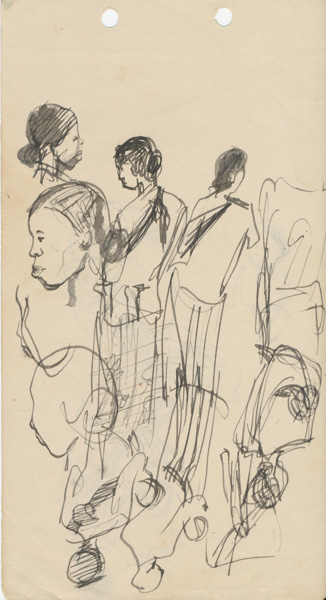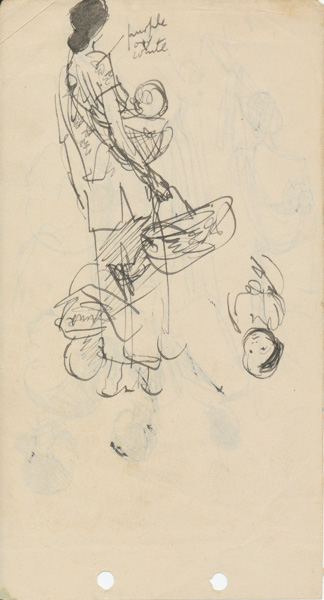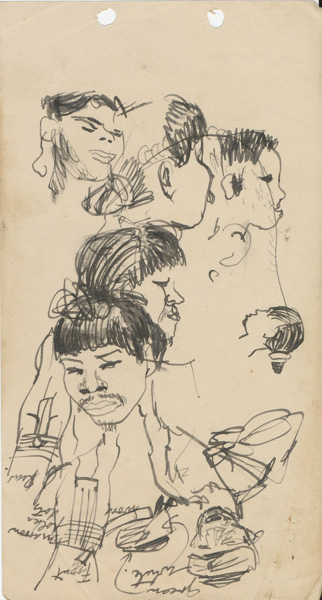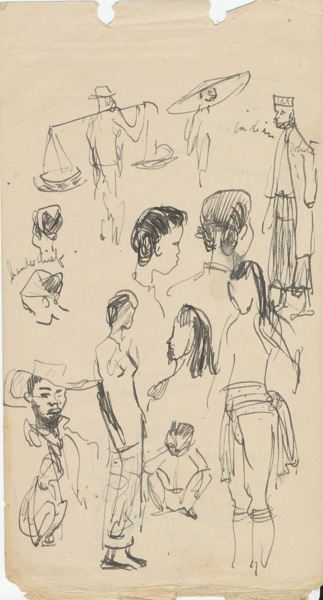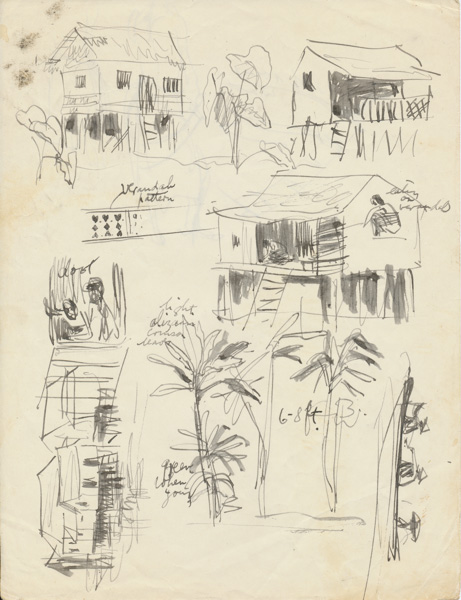W. E. Pidgeon
c/o Public Relations
1 Aust Corps
3 Aug Friday [1945]
Dear Jesso,
Am in a stinking little grey bleached place called Weston – arrived here after 4 1/2 hours in another barge and the trip was just as hot and dull as that from Brunei. Soft lotions of frankiness and myrth would be more beneficial to my skin than these down pouring blasts of heat. Yesterday in Labuan we took a day off and lazed in the sun and surf and under the coconut palms while the China Sea sent sweet cooling winds to dry away the sweats. It seemed so cool, although it was 87 degrees (symbol) in the shade of the tents that Cliff and I just sopped up sun in a big way. Half an hour after retiring to the tent I took on a particularly choice hue of Alizarin Crimson which makes a very striking colour combination in juxtaposition to my green shirt, and makes for a very tender shoulder, not the sort of shoulder on which to sling the many and weighty packs I am lugging around. We got up at 5.30 this morning, and waited till 8.15 for the barge to pull out. Of course this barge must miss contact with the 12.00 jeep train that runs from here to Beaufort. So we are waiting again. Just a mere 2 hours for the next. 2 hours as lively as one could wish for – just as if you were on one of those unattended railway stations out west. This jeep train is, I believe, as I haven’t yet seen it, a collection of motley old carriages and trucks pulled along a light narrow gauged line by a jeep which has had its ordinary wheels replaced by a railway type. Weston is a hive of activity – three natives just staggered past.
Beaufort 8.30 pm. So far this is a bastard of a place. After a really stinking day we have been unloaded into an old evacuated house to which clings a rare odour of old Chinese or Japs. (At least that is what I presume that is what it is). To cap matters there’s no even a bleeding light in the whole flaming joint. Consequently I’m writing this in a Salvation Army social tent housing at the moment 25 lively tea drinkers and one cud-chewer which is me. The tables groan under the weight of many cuppas (or rather tinnas), the conversation is subdued but constant – the radio more than holds its own against all other noise. Four other diligent letter writers compete with my silence. It’s all very much like the lounge of an hotel only the liquor is tea (or whatever it may be – I am completely baffled by the taste) and the only occupants naturally are men. It is quietly social. And is the only place wherein I can find light enough to write this letter. Incidentally I am the only baldy in the place, and for that matter one of the few I meet in the whole army under the rank of Colonel or Brigadier. Nevertheless the fruitful climate of Borneo has brought forth on any arid head a fine crop of 4 or 5 brand new hairs. These grow straight and bravely upright down the centre of the field. My continuity of thought is breaking down under the strain of trying to hear what everyone is saying. The tea is evidentially encouraging them to compete with the volume of the wireless – the general level of noise has risen by 100 percent. I think I’ll have another go at the brew that is coming out now – it seems to have some stimulating virtues from what I can here. It’s hot and wet – it tastes sweet and has a dark cloudy look – but I still don’t know what it is.
The jeep train was worth the trip even if there is little in it as a serious drawing job. Perhaps a comic sketch. The steam engines which used to draw the trucks and carriages have broken down and are under repair. The ubiquitous jeep takes their place and draws up to 3 cars behind them. The one we came up on consisted of first a flat top truck, next an ordinary one, and lastly a box car for the rations. Chinese and Malays occupied the first, and soldiers the second.

It is an interesting trip. The narrow gauge leads the train by disused paddy fields through long and delightful tunnels of tropical green. The rubber trees meet in an arch overhead and the undergrowth that has been growing in the plantations for the last 3 1/2 years forms walls of fern and palm and flowering lasiandra which brush the body as you pass. As a rule the track itself is carpeted in grass and only the polished lines indicate the way ahead. An intimate green pathway over which our trucks clunkety – clunk with all the noises save that of the great asthmatic huffing of a real train. Natives stand aside for us to pass and look just like the line people back home – but you miss the cry of “Paper! Paper!” At occasional clusters of houses in the plantations we pull up at a station and unload to the screechings and joviality’s of the Chinese. I shall continue the train trip further onto Papar in a few days time.
Am looking forward to getting a letter in a few days. I hope that you are both all right – also Mum. How’s the pool and fitties? Have you been giving the Coyes a rest. I am feeling very holy and very well – don’t care if I don’t have a drink at all and certainly have no desire to collect myself any more hangovers.
Lots of love dear – tell little Graham Poppa thinks often of him always when I see the kids up here and there are thousands of them.
Love
Bill

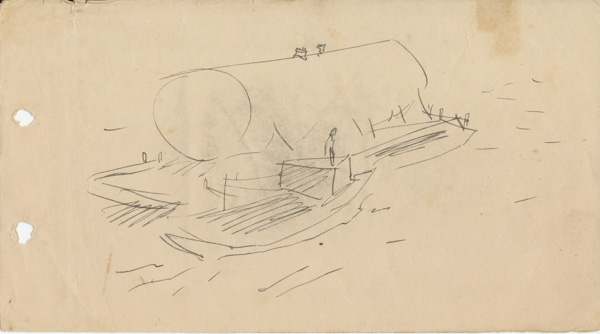
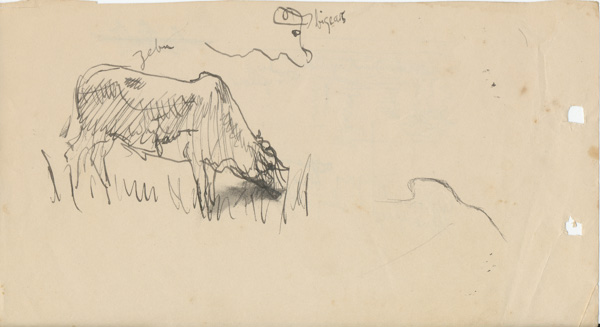
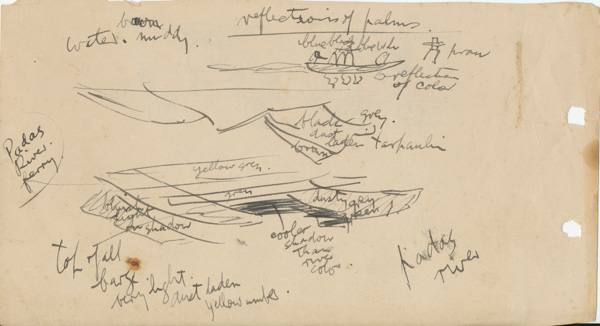
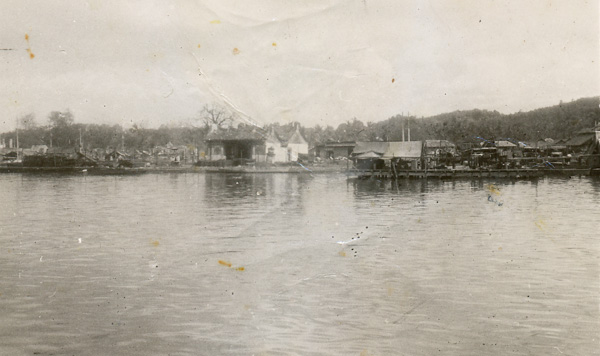
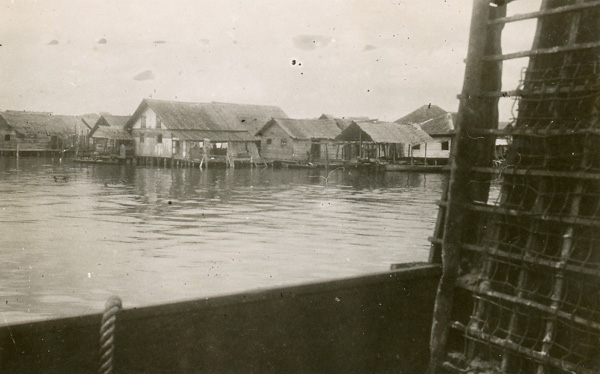

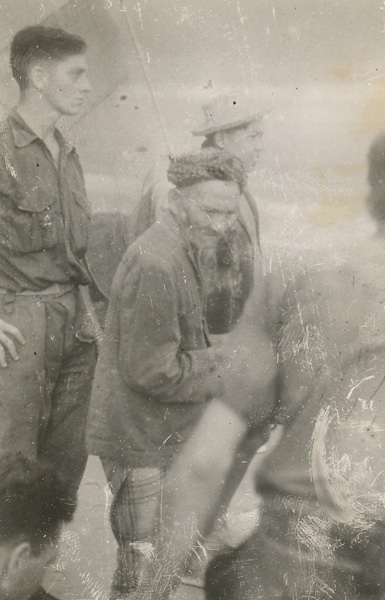
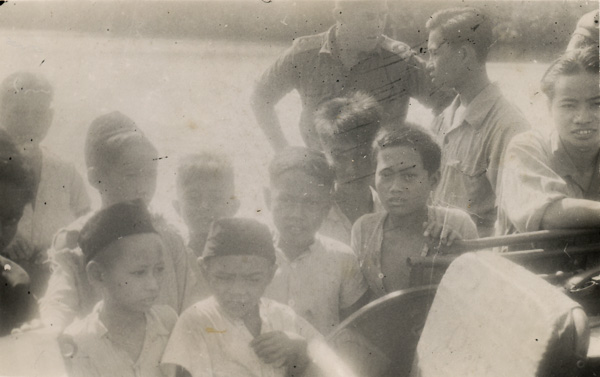




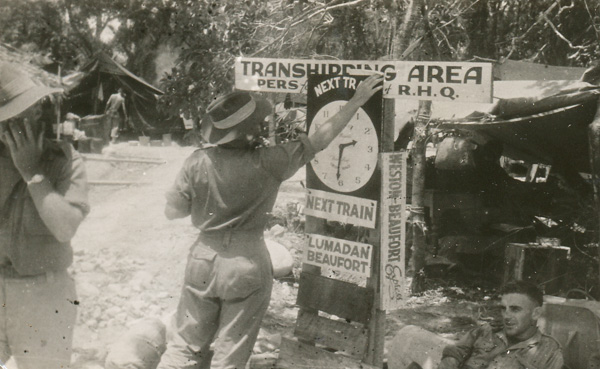




![[Study, Dyak warrior, Limbang area, Sarawak I]](http://wepidgeon.com/pidgeonpost/wp-content/uploads/2013/08/WEP-45-A-3931-P.jpg)


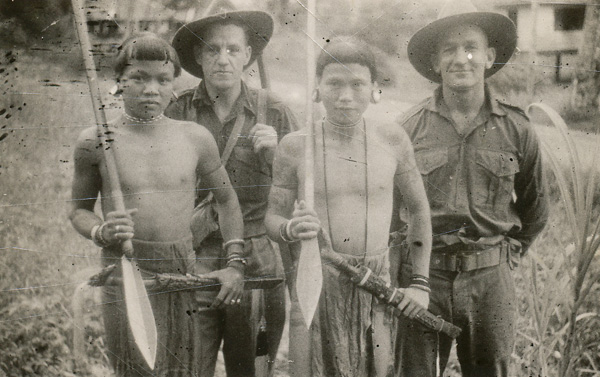





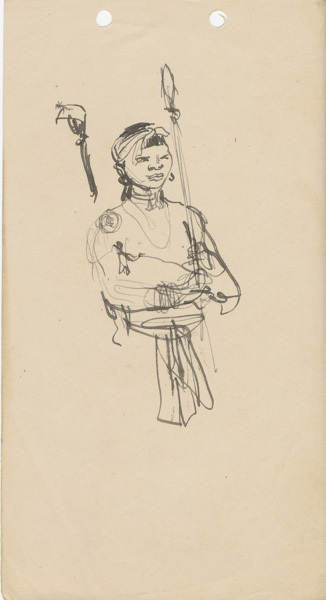
![[Study, Dyak warrior, Limbang area, Sarawak II]](http://wepidgeon.com/pidgeonpost/wp-content/uploads/2013/08/WEP-45-A-3932-D.jpg)

